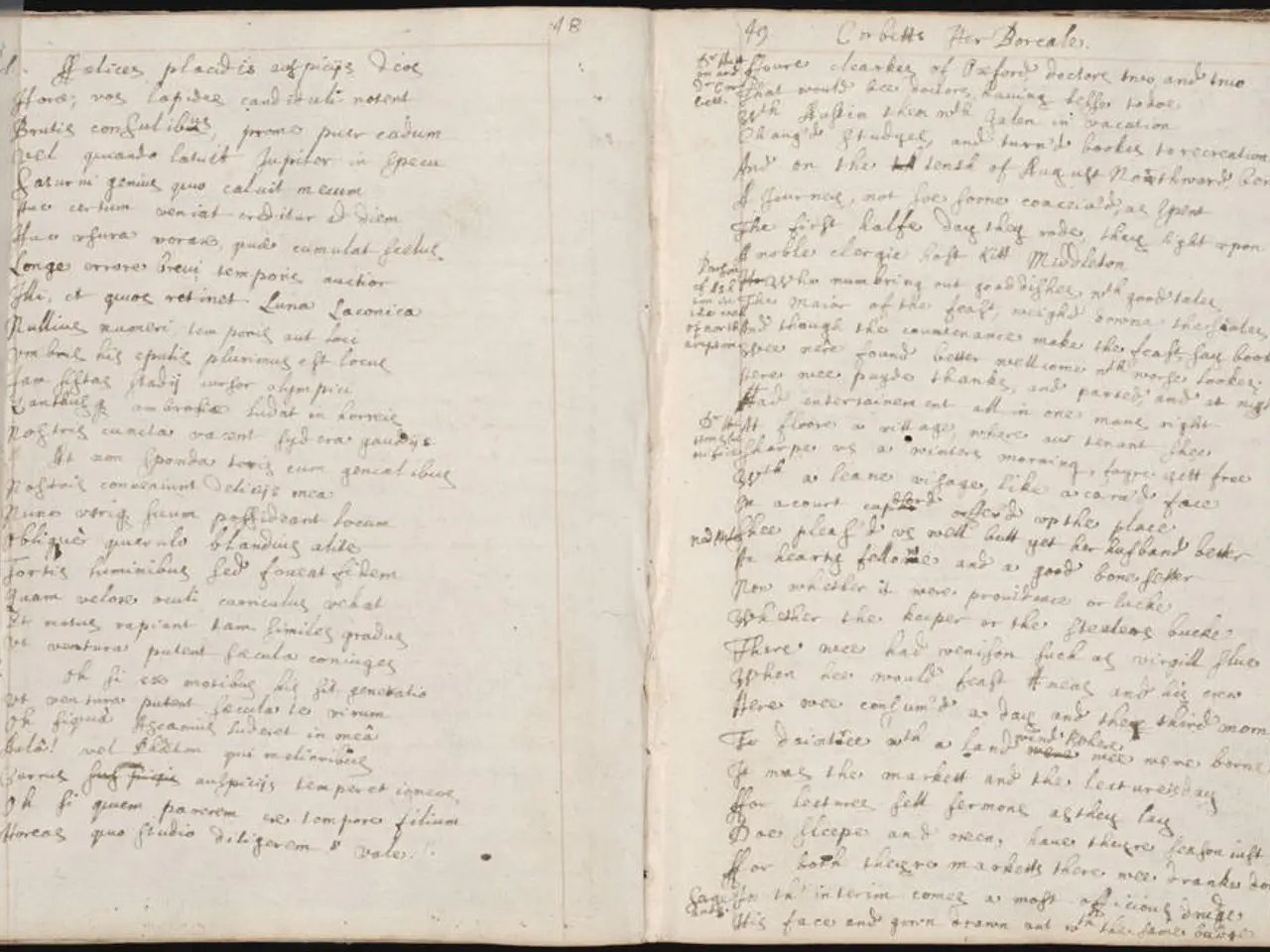Exploring the Purpose of Prologues and Epilogues: Are They Necessary?
In the captivating world of contemporary romance, authors often employ unique storytelling techniques to engage readers and deepen the emotional impact of their narratives. One such technique is the use of prologues and epilogues, as demonstrated by award-shortlisted author Helena Fairfax.
Prologues can hook the reader early by creating suspense or teasing events from later in the story, encouraging readers to continue reading. They are also useful for establishing tone and setting, providing background information, or introducing events or perspectives that are important but wouldn’t fit seamlessly into the main narrative. However, they must be connected to the main story and add meaningful context, or they risk confusing or disengaging the reader.
In her novel, "A Way from Heart to Heart", Fairfax used a prologue to establish context and give background details, including the heroine's husband's death in Afghanistan five years before the actual story begins. This strategic use of a prologue helped create immediate sympathy for the characters and set up the novel’s premise.
On the other hand, epilogues serve to provide closure after the main plot resolves. They can show what happens to characters after the climax, clear up loose ends, or offer a final reflection that enhances the story’s emotional impact. The epilogue in "The Silk Romance", penned by Fairfax, includes a scene with the heroine's family and best friend, as well as a heartwarming depiction of the hero and heroine living their happily ever after. This uplifting ending was intentionally written to bring a sense of completeness to the story.
Fairfax, known for her engaging contemporary romances with sympathetic heroines and heroes she's secretly in love with, believes in writing the story the way she thinks is best. She initially avoided using a prologue in "A Way from Heart to Heart", but later decided to use one after receiving feedback on an early draft. The author's decision to include a prologue proved to be a success, as it helped clarify the characters' motivations and improve the overall narrative flow.
The use of prologues and epilogues is not without controversy. Some writing experts argue that they are a bad thing, claiming they can disrupt the narrative flow or confuse readers. However, when used effectively, these literary devices can significantly enhance a story, providing added value through framing, tension-building, or closure, and clearly connecting to the main storyline to engage readers without causing confusion.
In conclusion, prologues and epilogues are effective tools when they provide added value—whether through framing, tension-building, or closure—and should clearly connect to the main storyline to engage readers without causing confusion. Helena Fairfax's skillful use of these techniques in her novels demonstrates their potential to enrich the reading experience for contemporary romance enthusiasts.
[1] Blythe, A. (2018). Prologues and Epilogues: When to Use Them and How. Writers Digest. [2] Crews, H. (2019). The Pros and Cons of Using Prologues and Epilogues. The Write Practice. [3] Hicks, L. (2020). How to Write an Epilogue That Will Make Readers Cry. The Write Life. [4] Kessler, S. (2017). Prologues and Epilogues: What Are They and How to Use Them. Jane Friedman. [5] Smith, J. (2016). Prologues and Epilogues: When to Use Them and Why. Writer's Relief.
Books about contemporary romance often employ prologues and epilogues as a form of entertainment, enhancing the emotional impact of the narratives. For instance, Helena Fairfax, an award-shortlisted author, uses these literary devices in her works, such as in "A Way from Heart to Heart" where a prologue was strategically incorporated to establish context and set up the novel's premise, and in "The Silk Romance" where an epilogue was used to provide closure and a heartwarming depiction of the characters' future.








